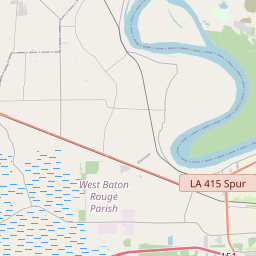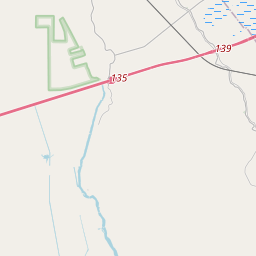Johnny Rivers
Historical marker location:
Baton Rouge, Louisiana
( Marker is on South River Road, 0.2 miles north of Government Street, on the right when traveling south.)













© OpenStreetMap contributors
B.1942
Loading...
Searching for other points of interest within 3 miles of this location.In 1803, Louisiana was sold by France to the United States in the Louisiana Purchase. The purchase doubled the size of the United States at the time.
About East Baton Rouge Parish
East Baton Rouge Parish Timeline
East Baton Rouge Parish, located in Louisiana, has a rich history that dates back centuries. The area was originally inhabited by Native American tribes, including the Houma, Choctaw, and Bayou Goula tribes. In the 18th century, French explorers and settlers arrived in the region, establishing a presence and influence that would shape the area's development.
The Parish's history took a significant turn in 1810 when it officially became a part of the newly formed Louisiana Territory. As the United States expanded and Louisiana became a state, East Baton Rouge Parish continued to grow, attracting settlers from various backgrounds, including African-Americans, Europeans, and Cajuns. The diverse cultural heritage of these groups would contribute to the unique identity of the area.
During the Civil War, East Baton Rouge Parish saw its share of turmoil. Baton Rouge itself was occupied by Union forces in 1862 and became a center for Union military operations in the region. The war brought about much destruction and brought significant changes to the social and economic landscape of the Parish.
In the modern era, East Baton Rouge Parish has continued to evolve and develop. The area has experienced rapid growth, with Baton Rouge becoming the state capital in 1849. Today, the Parish is home to a thriving economy with industries ranging from petrochemicals and manufacturing to education and healthcare. Despite its growth, the historical significance of East Baton Rouge Parish is still visible in the region through its preservation of historic buildings, landmarks, and cultural traditions.
The Parish's history took a significant turn in 1810 when it officially became a part of the newly formed Louisiana Territory. As the United States expanded and Louisiana became a state, East Baton Rouge Parish continued to grow, attracting settlers from various backgrounds, including African-Americans, Europeans, and Cajuns. The diverse cultural heritage of these groups would contribute to the unique identity of the area.
During the Civil War, East Baton Rouge Parish saw its share of turmoil. Baton Rouge itself was occupied by Union forces in 1862 and became a center for Union military operations in the region. The war brought about much destruction and brought significant changes to the social and economic landscape of the Parish.
In the modern era, East Baton Rouge Parish has continued to evolve and develop. The area has experienced rapid growth, with Baton Rouge becoming the state capital in 1849. Today, the Parish is home to a thriving economy with industries ranging from petrochemicals and manufacturing to education and healthcare. Despite its growth, the historical significance of East Baton Rouge Parish is still visible in the region through its preservation of historic buildings, landmarks, and cultural traditions.
East Baton Rouge Parish Timeline
This timeline provides a condensed summary of the historical journey of East Baton Rouge Parish, Louisiana.
- 1699 - French explorer Pierre Le Moyne d'Iberville arrives in present-day Louisiana, including the area that would become East Baton Rouge Parish.
- 1763 - Treaty of Paris ends French and Indian War, transferring control of Louisiana (including East Baton Rouge Parish) from France to Spain.
- 1800 - Spain cedes Louisiana back to France through the Treaty of San Ildefonso.
- 1803 - United States purchases Louisiana from France in the Louisiana Purchase, gaining control of East Baton Rouge Parish.
- 1810 - West Florida Rebellion, including the area of East Baton Rouge Parish, declares independence from Spain and briefly forms the Republic of West Florida.
- 1812 - Louisiana achieves statehood, with East Baton Rouge Parish as one of its original parishes.
- 1840 - Baton Rouge becomes the capital of Louisiana.
- 1846 - East Baton Rouge Parish experiences a major flood, causing significant damage to the area.
- 1861 - Louisiana secedes from the Union, joining the Confederacy during the American Civil War.
- 1862 - Union forces capture Baton Rouge, bringing East Baton Rouge Parish under Union control during the Civil War.
- 1882 - The Louisiana State University (LSU) is founded, establishing a major educational institution in East Baton Rouge Parish.
- 1918 - East Baton Rouge Parish is severely affected by the Spanish influenza pandemic, which spreads across the world.
- 1973 - East Baton Rouge Parish Metropolitan Council is established, changing the governing structure of the parish.
- 2005 - East Baton Rouge Parish, along with the rest of the Gulf Coast, is heavily impacted by Hurricane Katrina, causing significant damage.